![]()
When the Titanic finally lost its battle with the North Atlantic sea and disappeared into the abyss below the waves, it was and still is one of the worst maritime disasters to ever take place. Taking with it over 1,500 lives, it is without a doubt one of the most famous tragedies in modern day history.
The story itself is well known. Nicknamed the “unsinkable ship”, after having departed Southampton, England on the 10th April 1912, the Titanic set sail on its maiden voyage to travel to New York City.
The ship had contained a mixture of class of passenger, from millionaires and businessmen, to the lower class of society who were eager to begin a new life in America.
But just five days into the journey, disaster struck when the ships starboard side scraped alongside a giant iceberg that had already been reported floating around 400 nautical miles south off the coast of Newfoundland, Canada.
The rest, as we know is history, and the story of the Titanic has been written in many books, as well as turned into movies and documentaries, with some perhaps adding mythology into the mix.
And this brings us to the story of a small group of courageous men, and one in particular, who have quite rightly become the epitome of the heroics that took place during that frightening and devastating morning on Monday, 15th April, 1912.

Wallace Henry Hartley was just 33 years old when he was assigned to be the bandmaster for the Titanic, after having served on other ocean liners such as the RMS Lusitania and the RMS Mauretania.
Having been born and raised in Colne, Lancashire, Wallace was influenced by his father, Albion Hartley, who was the choirmaster and Sunday School superintendant at the Bethel Independent Methodist Chapel which is based along Burnley Road, Colne.
It was whilst attending worship with his family that Wallace would be introduced to the hymn, “Nearer, My God, to Thee” by his father, and this hymn would stay with Wallace throughout his short but invariably, interesting life.
After leaving school, he soon found employment with the Craven & Union Bank in Colne but when his family moved to Huddersfield in 1893, Wallace, who was 17 years old and by now a competent violinist, signed up for the Huddersfield Philharmonic Orchestra around 1895-96.
Wallace and his family would soon move from Huddersfield and relocate to Leeds and later to Dewsbury.
He would perform for the Bridlington Parade Orchestra, and it wasn’t just concert halls he would perform at, he would often play at the likes of Collinson’s Orient Café in Leeds.
It was whilst in Leeds he would meet with Maria Robinson, to whom he would become engaged, and planned to be married in the summer of 1912.
After spending time travelling on the Lusitania and then the Mauretania, in which he had made 81 voyages, Wallace, and one of his close friends, Mr. Ellwand Moody, a celloist, was asked just the day before the Titanic was due to sail, if they would transfer from the Mauretania to attend the ill-fated voyage.
Ellwand would later tell a reporter working for the Yorkshire Evening Post that he had been asked by Wallace to join him on the Titanic, but he refused, saying he had no liking for big boats. He went on to say that they were building them too big and the Titanic had a sort of ‘presentiment’ that something would happen to her, and it was because of his superstitions that ‘something would happen’ that he made no attempt to join Wallace on the Titanic, despite being offered a preliminary offer £20 to do so.
As for Wallace, he was hesitant to take up the role of bandmaster on the Titanic, knowing he would be leaving behind his fiancée yet again for another travel, but certain was he that this trip could open up a whole new world of contacts, in the end it was an opportunity he could not turn down.
On the 10th April, the RMS Titanic would begin its maiden voyage, departing from Southampton and taking with it an estimated 2,224 passengers and crew members.
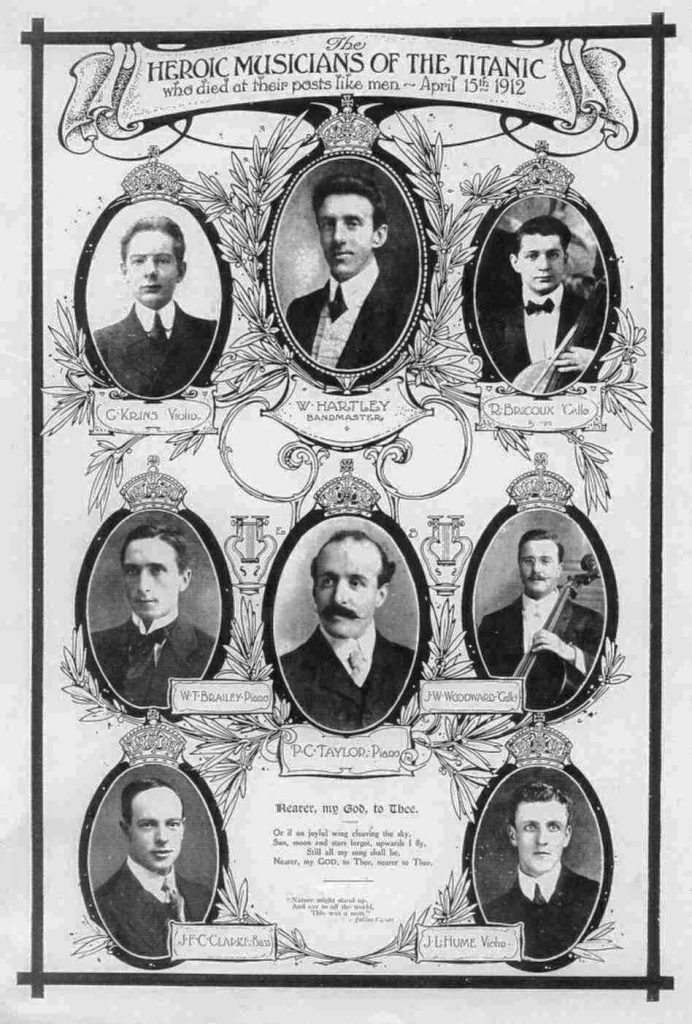
Wallace was accompanied on the Titanic by seven other musicians divided into two bands; Theodore Ronald Brailey, aged 24 and a pianist, Roger Marie Bricoux; aged 20 and a cellist; John Frederick Preston Clarke, aged 30, bassist; John Law Hume, aged 21, Violinist; Georges Alexandre Krins, aged 23, Violinist; Percy Cornelius Taylor, aged 32, Cellist and finally, John Wesley Woodward, aged 32, also a cellist.
And whilst we may think of Wallace himself as being a ‘hero’, we should never forget the other band members. After all, Wallace was but just one man out of a group of eight, who, under extreme panic and duress, performed until the very last to try and comfort the passengers as the Titanic slowly began to submerge under the freezing cold water.
Witnesses who had survived the sinking would later tell reporters of hearing the band play to the very last. With ‘Nearer, My God, to Thee’ being mentioned on quite a few occasions. And yet, another favourite song of Wallace’s was that of ‘Oh God, our help in ages past’ and its quite concievable that both songs had been played by Wallace and his band during those final moments prior to the Titanic sinking.
In fact, Ellwand Moody himself believed that if what the witnesses themselves had heard was correct, then Wallace had most certainly played ‘Nearer, My God, to Thee.’
However, did the band really play this hymn, or any other hymns, as are are led to believe?
With all respect to Mr. Wallace Hartley and the other members of the band, let us have the truth at all costs, and not associate false sentimentality with any hymn or tune.
Astrophyl, Saturday, 27th April, 1912
In one newspaper article, printed inside the Yorkshire Evening Post on Saturday, 27th April 1912 – it seems one interested observer wasn’t convinced!
Doubting how anyone could play a musical instrument in such devestating circumstances and with the ship cantering over at an acute-angle, ‘Astrophyl’ as he called himself, asked; “..how was it possible for the passengers rushing to the boats to hear these instruments playing any time on a ship nearly a sixth of a mile in length. How also could the people in the boats, who, it is stated, heard the playing of ‘Nearer, My God, to Thee’ as the liner sank beneath the waves, hear the hymn when they themselves, according to their own account, were about one mile from the spot? With all respect to Mr. Wallace Hartley and the other members of the band, let us have the truth at all costs, and not associate false sentimentality with any hymn or tune.”
Astrophyl could be absolutely correct in his assumptions, but we do know that it took over two hours for the Titanic to finally succumbe to the icey North Atlantic ocean and in that time the band, whilst almost certainly acknowleding their fate, would have had time to play some hymns.
The rest of the story, as we now know, is history, and rightly or wrongly, ‘Nearer, My God, to Thee’ would forever be associated with Wallace Hartley and the rest of his band mates.
It would be almost two weeks after the sinking of the Titanic that the body of Wallace Hartley would be recovered by the crew of the CS Mackay-Bennett, a cable repair ship owned by the Commercial Cable Company, registered in London.
Still wearing his bandsman’s uniform of which was a brown overcoat, black boots, green facings and green socks, Wallace was found with a leather case strapped around his neck that contained his violin, and in his pockets was a gold fountain pen with his initials W.H.H. engraved. A single-stone diamond ring was on his finger and the watch he was wearing had stopped at precisely 2.25am. It was full of sea water and discolored to a deep brown.
Inside his pockets was a collection of papers, but too badly damaged due to the sea-water. And amongst these was a letter sent by his family, which contained a special message from his mother, accompanied by a number of crosses to represent kisses. There was also a telegram from his fiancée, Maria.
A silver match box bearing an inscription was also found amongst his possessions. It read; “To W.H.H., from Collinson’s Staff, Leeds.”
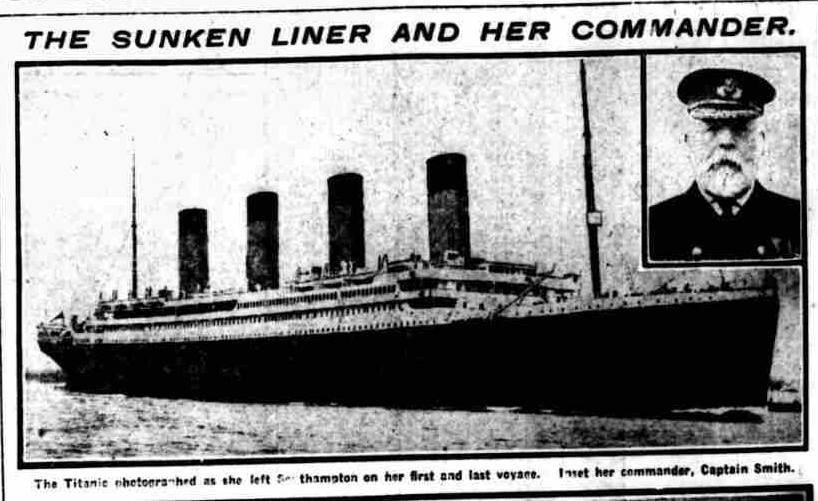
His body would shortly thereafter be transferred to the Arabic, ready to be transported back to England. On the 17th May, his father, Albion Hartley, who was deeply affected by the death of his son, would meet the Arabic upon its arrival at Liverpool, and after Wallace’s coffin had been placed onto a waiting hearse, the coffin would be transported 59 miles during the evening before finally reaching its destination at the Bethel Independent Methodist Chapel at Colne at around one o’clock on Saturday morning, 18th May.
Throughout the day, thousands of people would descend on the town to attend the funeral. Flags were flying at half-mast on most large buildings, and shop keepers and householders showed their respect by drawing down blinds in their windows.
The service inside the Chapel, although private in nature, was attended by some members of the public, and took place from one o’clock in the afternoon, lasting for just over an hour.
During the proceedings, the coffin, which was made of rosewood and bore heavy brass mountings and including a simply worded inscription, which read ; “Wallace H. Hartley. Died April 15, 1912. Aged 33 years. “Nearer. My God. To Thee.”, rested in front of the alter, draped in a purple cloth bearing flowers and ferns. Behind it, a mass of wreaths which had been sent from all around the Country had been neatly arranged.
And amongst all of these was one very simple looking cross made from red roses and lillies of the valley with a card with the words ; “O teach me from my heart to say ‘Thy will be done.’” This last mark of respect was sent by Wallace’s fiancee, Maria Robinson.
After hymns and prayers had been made, along with songs that had included “Oh, Rest in the Lord.”, “Oh God, our help in ages past” and “Nearer, My God, To Thee.”, the service concluded with the “Dead March” in “Saul”.
A long procession then formed which was headed by mounted police and followed by a posse of police on foot.
Several bands from surrounding areas had all come together and these included Colne Band, Trawden Band, Mount Zion Band, Nelson Band and Brierfield Band.
The procession which was roughly half-a-mile in length, would eventually make its way slowly towards the public cemetery, with the route being densly lined with spectators, some of which had climbed onto roofs just to get a better view.
Due to the overwhelming outpouring of grief and the fact that onwards of 30,000 people had lined the route from the Chapel to the cemetery, the procession would take approximately two hours to reach its destination, arriving at just after four o’clock in the afternoon.
Inside the graveyard, only close family and friends would attend the final ceremony as Hartley’s coffin was slowly placed into the ground. At the graveside, the vast majority again began to sing, “Nearer, My God, To Thee.”
Finally, and as the ropes that had slowly lowered the coffin into its final resting place had been removed, a small group of scouts who had followed along in the procession and who had been allowed inside the graveyard, put their bugles to their lips, before closing out the ceremony by playing the “Last Post.”
Out of the seven members of the band Wallace had the fortune to lead on the Titanic, only two bodies would be recovered; those being John Frederick Preson Clarke and John Law Hume.
John Clarke was buried at Mount Olivet Cemetery, Halifax on Wedneday, 8th May 1912.
John Hume was buried at Fairview Cemetery, Halifax, Nova Scotia, also on Wednesday 8th May 1912.
One second-class passenger said:
“Many brave things were done that night, but none were more brave than those done by men playing minute after minute as the ship settled quietly lower and lower in the sea. The music they played served alike as their own immortal requiem and their right to be recalled on the scrolls of undying fame.”
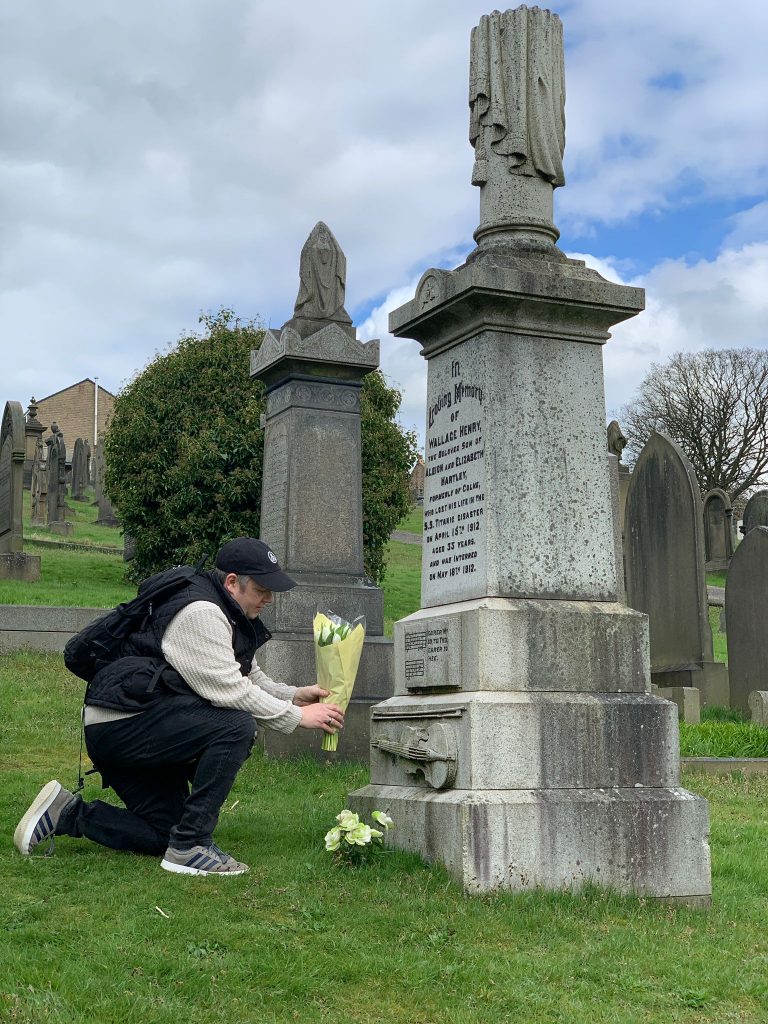
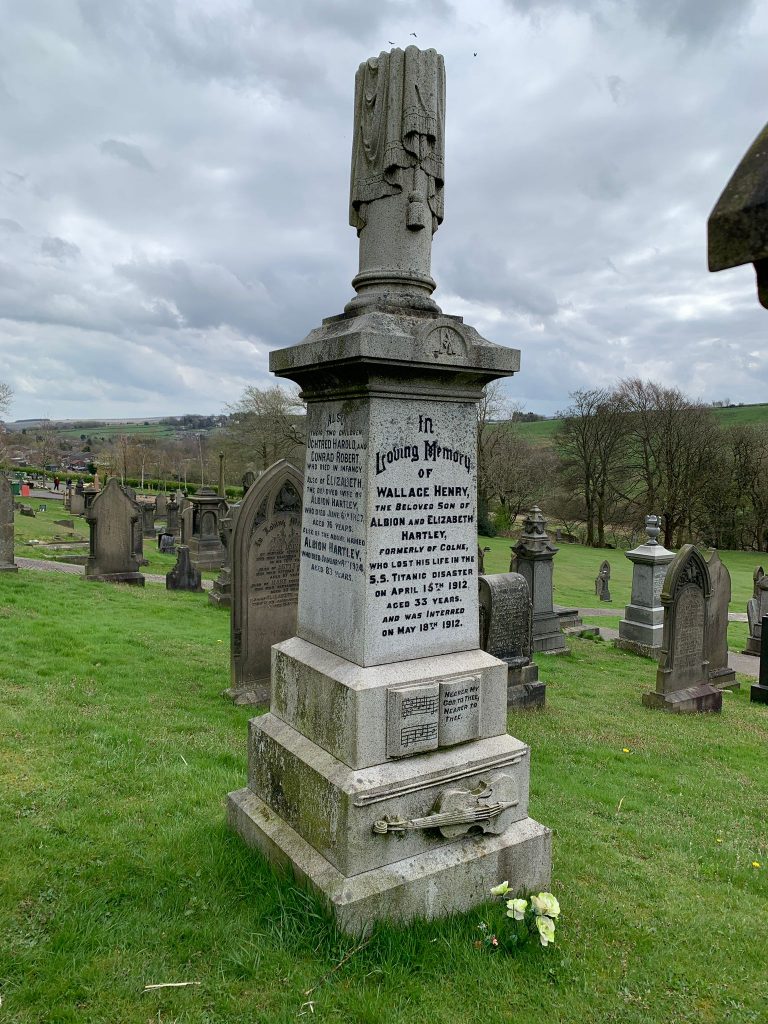
Sources used in this story;
Illustrated London News – Saturday 25 May 1912
Christchurch Times – Saturday 25 May 1912
Yorkshire Evening Post – Saturday 27 April 1912
Leeds Mercury – Saturday 20 April 1912
Daily Mirror – Saturday 20 April 1912
+ many more courtesy of the British Newspaper Archive – www.britishnewspaperarchive.co.uk and www.ancestry.co.uk
Please follow me on social media;
Twitter – https://twitter.com/dohpods
Instagram – www.instagram.com/dohpods
Youtube – https://www.youtube.com/c/DaysofHorrorPodcast
Music;
Casual Desire – Ugonna Onyekwe – No Copyright Music
Contact – The Tower of Light – No Copyright Music
Nearer, My God, To Thee – Sharon Singers of the Sharon Mennonite Bible Institute.

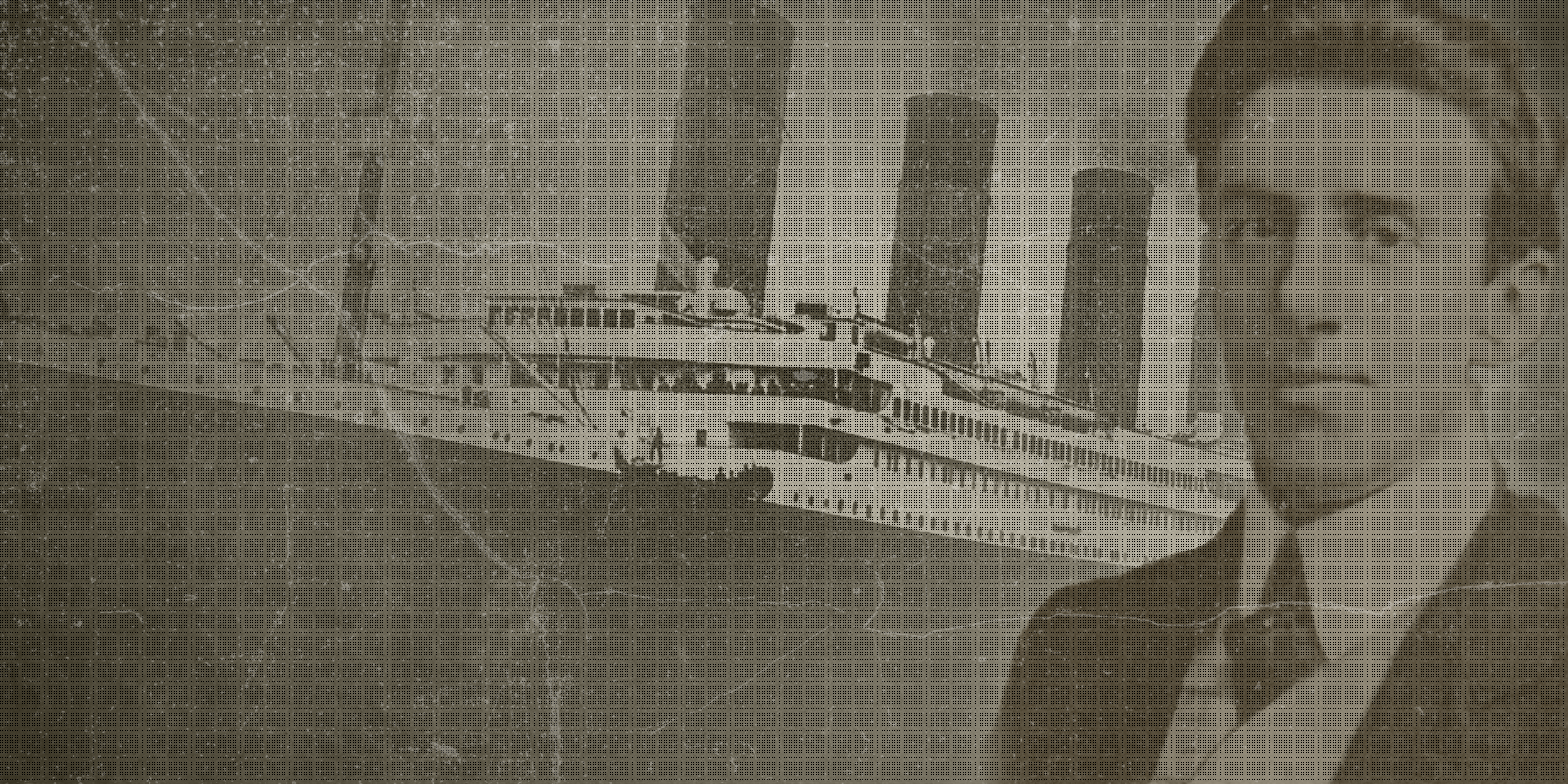
Leave a Reply